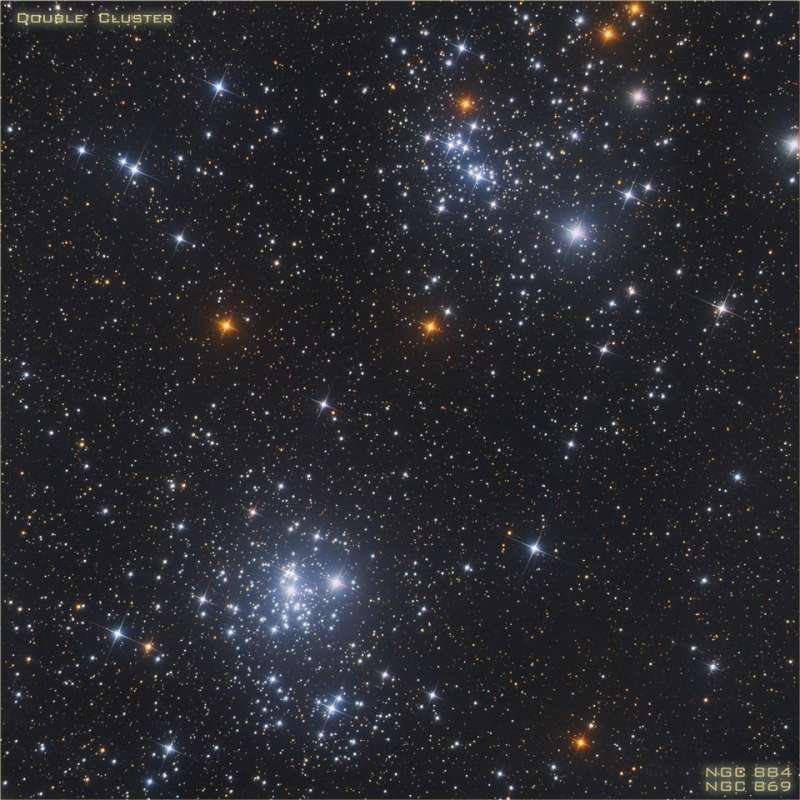Credit & Copyright: F. Antonucci, M. Angelini, & F. Tagliani,
ADARA Astrobrallo
Explanation:
Few star clusters are seen to be so close to each other.
Some 7,000 light-years away, though, this pair of open or galactic
star clusters is an easy
binocular target, a
lovely starfield in the
northern constellation
Perseus.
Also visible to
the unaided eye from dark sky areas,
it was cataloged in 130 BC by Greek astronomer Hipparchus.
Now known as
h and
chi Persei, or
NGC 869 (above right) and NGC
884, the clusters themselves are separated by only a few hundred light-years
and contain stars much younger and hotter than the Sun.
In addition to being physically close together,
the clusters' ages
based on
their individual stars are similar - evidence that both
clusters were likely a product of the same
star-forming region.
APOD Editors to Speak:
RJN in Philadelphia on Jan.
3 &
JTB in New York City on Jan. 4
1999 2000 2001 2002 2003 2004 2005 2006 2007 2008 2009 2010 2011 2012 2013 2014 2015 2016 2017 2018 2019 2020 2021 2022 2023 2024 2025 |
Yanvar' Fevral' Mart Aprel' Mai Iyun' Iyul' Avgust Sentyabr' Oktyabr' Noyabr' Dekabr' |
NASA Web Site Statements, Warnings, and Disclaimers
NASA Official: Jay Norris. Specific rights apply.
A service of: LHEA at NASA / GSFC
& Michigan Tech. U.
|
Publikacii s klyuchevymi slovami:
open cluster - Rasseyannoe skoplenie
Publikacii so slovami: open cluster - Rasseyannoe skoplenie | |
Sm. takzhe:
Vse publikacii na tu zhe temu >> | |
